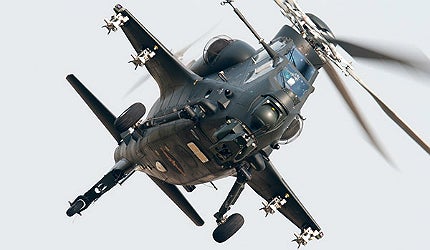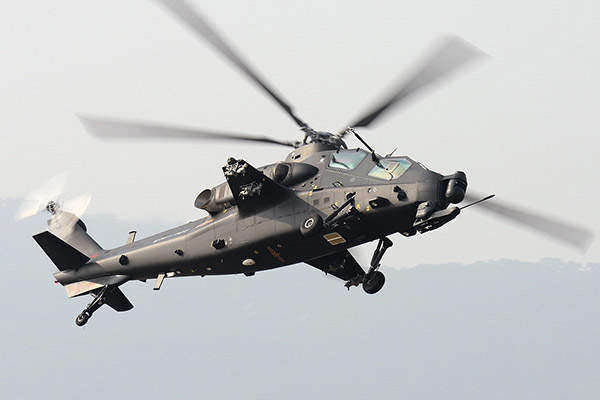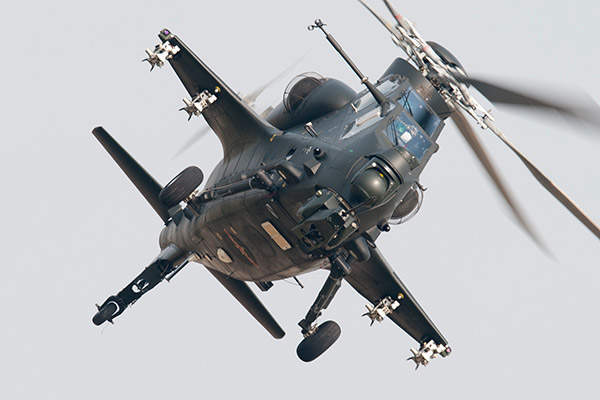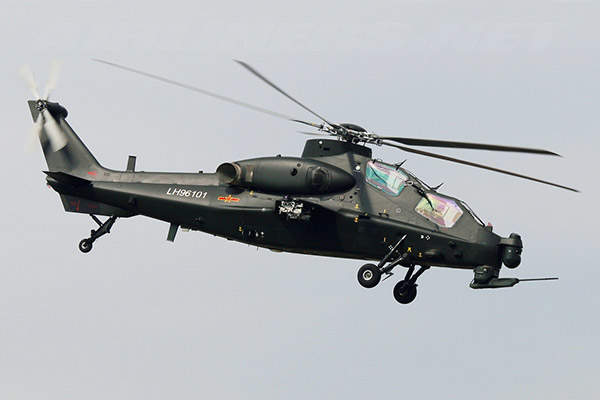
The Z-10 attack helicopter was developed by the Changhe Aircraft Industries Group (CHAIG) and China Helicopter Research and Development Institute (CHRDI) for the People’s Liberation Army (PLA). The helicopter is being manufactured by Changhe Aircraft Industries Corporation (CAIC).
The Z-10 attack helicopter can be primarily deployed in anti-armour and battlefield interdiction missions. The helicopter can also conduct limited air-to-air combat operations.
The Z-10 helicopter took to the skies for the first time in April 2003. The first helicopter was delivered to the PLA in 2009. The Z-10 was displayed for the first time at the 9th China International Aviation and Aerospace Exhibition in Zhuhai in November 2012.
Development of the Z-10 attack helicopter
The development of the Z-10 attack helicopter started in the mid-1990s at CHRDI’s and CAIG’s sites in Jingdezhen, China. It is the first modern attack helicopter designed and produced domestically by the People’s Republic of China.
The full-scale test platform was completed by the end of 2001. The initial flight tests were completed in 2003 and the second stage of tests were concluded by 2004. The Z-10 can be compared with its Western counterparts, including AH-1 Cobra, AH-64 Apache and Tiger helicopters.
In June 2012, United Technologies and its subsidiaries Pratt & Whitney Canada and Hamilton Sundstrand pleaded guilty for breaching the Arms Export Control Act and making false assertions about the illegal export of US-made military software for the Z-10. The companies agreed to pay more than $75m to the US Government as part of a global settlement related to the Chinese arms export violations.
Features of the Chinese military aircraft
The Z-10 incorporates a conventional attack helicopter layout featuring a nail down fuselage and stepped tandem cockpits. The fuselage, with a sloped side, is tapered to the rear for a reduced radar cross section. The helicopter is equipped with five-bladed main rotor and four-bladed tail rotor. Two engines are mounted at the rear of the cockpit. The helicopter has a length of 14.1m, rotor diameter of 13m and a height of 3.8m. The maximum take-off weight of the Z-10 is 8t.
Cockpit and avionics onboard
The stepped tandem cockpit accommodates a gunner in the front and pilot in the rear on ejection seats. The cockpit is protected by composite armour. The bullet-proof glass canopy of the cockpit can withstand 7.62mm rounds.
The modern glass cockpit is equipped with multifunctional displays (MFDs), a helmet mounted sight with night vision goggles and a fly-by-wire (FBW) control system. The helicopter can be fitted with a forward-looking infrared (FLIR) and a low-light television as well as radar systems.
Armaments on the modern attack helicopter
The chin mounted turret can be fitted with a 20mm or 30mm autocannon. Two stub wings provide four hardpoints for holding external weapons. The GJV289A standard databus architecture allows the integration of weapon systems of both Soviet and Western origin.
The helicopter can also adapt to use the newly developed HJ-10 anti-tank guided missile (ATGM). The missile is believed to be equivalent to the US-made AGM-114 Hellfire.
The helicopter can carry up to eight ATGMs for anti-armour role, eight TY-90 air-to-air missiles and four PL-5, PL-7 and PL-9 air-to-air missiles.
The TY-90 missile is specifically designed for helicopters performing aerial combat missions. The Z-10 can also carry multibarrel unguided rocket pods for ground attack missions. A total of four pods under sub wings can hold 57mm-90mm rockets.
Z-10 countermeasures and engines
The electronic countermeasures (ECM) suite of the Z-10 integrates a radar warning receiver, a laser warning receiver, an infrared jammer and chaff / flare decoy launching system. The modular design also adapts the latest systems, replacing the existing jamming and decoy launching systems.
The Z-10 is powered by two Pratt & Whitney Canada PT6C-67C turboshaft engines. The engines are equipped with Full Authority Digital Engine Control (FADEC) system. Each engine develops a maximum continuous power of 1,142kW.
The Global Military Rotorcraft Market 2011-2021
This project forms part of our recent analysis and forecasts of the global military rotorcraft market available from our business information platform Strategic Defence Intelligence. For more information click here or contact us: EMEA: +44 20 7936 6783; Americas: +1 415 439 4914; Asia Pacific: +61 2 9947 9709 or via email.
Related content
WS-1B Multiple-Launch Rocket System, China
The WS-1B multiple-launch rocket system was developed by the China National Precision Machinery Corporation (CPMIEC), based in Beijing, China.
Ka-50 Black Shark (Hokum) Attack Helicopter, Russian Federation
The Ka-50 Black Shark helicopter, developed by Kamov Helicopters JSC, carries the Nato codename Hokum A, with Hokum B the two-seat version, Ka-52.






